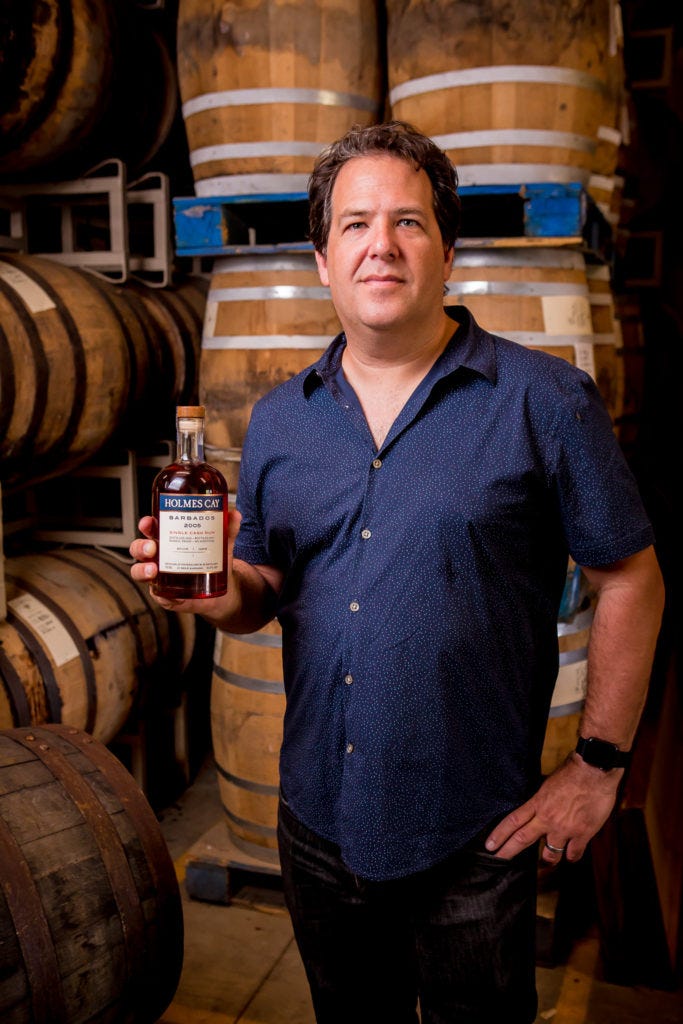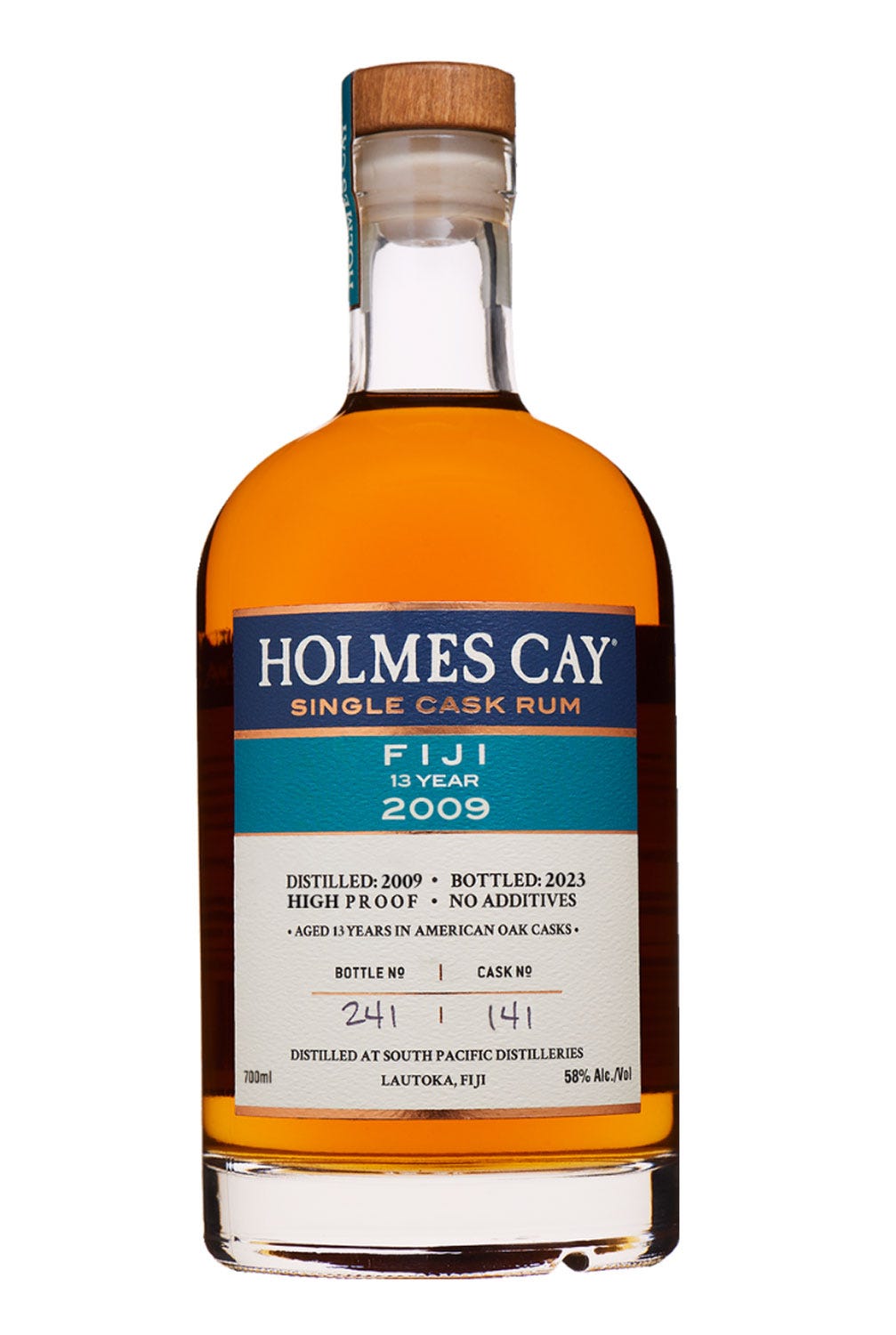Building in an undeveloped category: Holmes Cay Premium Rum
What does it take to build an ultra-premium brand in a category that hasn’t broken out yet?
That’s the question at the heart of Holmes Cay, a rum brand that’s spent the last few years doing just that.
In the U.S., over 70% of rum sales come from just two brands (GUESS WHO!). The rest of the category remains scattered and misunderstood: dominated by additives, fake age statements, and inconsistent standards across countries. While tequila, gin, and whiskey have all had breakout brands that pulled the category forward, rum still hasn’t had its moment.
Holmes Cay is building anyway.
We spoke with Eric Kaye, founder and owner of the brand, about what it takes to build in an underdeveloped category. This interview takes us into the trenches of bottom-up brand building. Let’s gooooooo!
» They started as a super niche independent bottler (a vehicle popular in whiskey, and that’s just starting to grow in rum. Essentially, independent bottlers buy spirits from distilleries and sell it under their own label, often as rare or limited releases aimed at collectors, connoisseurs, and adventurous drinkers).
» They quickly grew a cult following among the “rum nerds” (this is a real thing - and its honestly a blast. I joined the Ohio Rum Society. If you’re into rum, find the Rum Society near you).
» And now they are bringing their single origin line to the masses on-premise.
But how exactly are they doing it?
1. Design a portfolio that educates
To reach both collectors and cocktail bars, Holmes Cay developed two clear product lines with very different audiences.
Single Cask Series: High-proof, limited drops for spirits geeks and collectors. These bottles can be upwards of $150. And that’s not a fluke.
Single Origin Line: Consistent blends at $40–$50 retail, designed for cocktails and broader adoption. This is your daiquiri rum. Maybe not your rum and coke. Or maybe it is?
Eric breaks it down:
This two-tiered business model allows them to build credibility and community while introducing new customers to rum’s range and potential.
2. Simplicity in brand draws people in. Simplicity is understandable.
Simplicity cuts through the noise around rum.
TLDR: keep it simple.
Rum is a messy category. Ingredients lists are all over the place, and premium brands appear next to non-premium versions – with little difference in the price tag.
Eric explains:
Holmes Cay is responding to this with a clean and straightforward product, and equally clean and straightforward brand design. The bottles are minimal and lean towards serious, with Holmes Cay taking notes from classic Scotch whiskey bottle design for for their single cask products (the fancy/high priced rums they release as independent bottlers). I remember seeing their bottles at the NY Rum Festival and doing a double take for this very reason. No pirates in sight.
For Eric, this design approach is all about elevating the profile of rum, and winning it the same respect other spirits get. Scotch whiskey doesn’t need fancy motifs to sell, so why should rum? His thoughts:
And their single origin bottles (the ones found in bars/restaurants/mainstream retailers at $40-$50 per bottle) are abstractions of the humble sugarcane plant. Eric says:
“We specifically avoided tiki type designs… that’s not us. It’s not our heritage… we like it, but we’re not going to appropriate Polynesian culture.”
Sugarcane is awesome, and I love that Holmes Cay celebrates that. I also love it because it’s honest. Why try to be something you’re not when you have so much to draw from already?
Transparency is central to this brand. No tropical kitsch. No artificial sweeteners. No inflated age statements.
This visual and verbal restraint is brand building. It tells a different story in a crowded and confusing space.
3. Grow by hand, not hype
Without a big ad budget, growth happens bottle by bottle, bar by bar, “liquid to lips” - as they say.
Holmes Cay (specifically for their single origin line) has invested in:
Tiki festivals and craft cocktail events
On-premise placements with bartenders who care about ingredients
Packaging designed for seriousness, not novelty
The distribution strategy is a long-term game: its about about precision, relevance, and building trust.
4. Stay focused
Finally, while many independents expand into multiple spirits, Holmes Cay remains committed to rum.
“We’re not trying to put out every spirit. This is about love for one category.”
While they recognize the difficulty of building in an underdeveloped category, the rum world holds out hope that the big, breakout rum brand is coming (watch this space 👀):
“It’s going to take somebody with very big marketing to blow out the category... There hasn’t been that brand that has really broken through the category in rum yet.”
Building in this kind of category takes more than a good product; it requires focus, constraint, and a willingness to work without the tailwinds.
But what I love about Holmes Cay is that they’re not waiting for rum to take off.
They’re just doing the damn thing.
Maybe this is your sign to do it, too?







